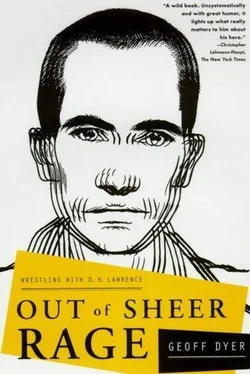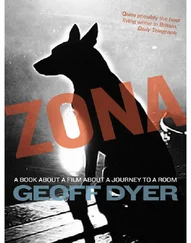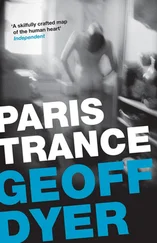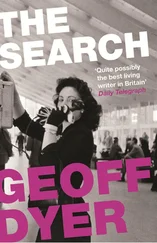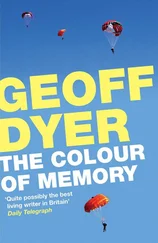We even got back on the moped. I had vowed never to get on a moped again but Laura, even in the dark days following the crash, conceded only that, back in Rome, she would be more careful, more alert. Now we were back in Rome she was eager, as she put it, ‘to get back in the saddle’. Laura has a good attitude to life and that, even more than her ability to pick up languages by watching soap operas, is why I love her. I, by contrast, have a very bad attitude to life, an attitude to life that began badly and is getting worse with every passing year, but it was not difficult for Laura to persuade me to get on the moped again. Laura drove, carefully, trying to avoid jolts. In Piazza Venezia we paused to admire il vigile, the white-gloved policeman who directed traffic with movements of hypnotic elegance. From his podium he conducted the traffic like a symphony: beckoning, halting, directing. It was impossible to say where one gesture ended and the next began. ‘Halt’ — clearly stated, unequivocal — merged exquisitely into ‘go’ in one flowing movement. Each gesture was executed with a flourish but this flourish — this elaboration and amplification of what was strictly necessary — added to its clarity, to its geometric precision. So it was with the architectural flourishes of Rome’s great baroque churches. The vigile ’s gestures were so clear that he seemed to address cars individually, making drivers almost proud to obey his commands. The traffic responded so promptly it was easy to think he took his cue from their movements, so that his conducting became a form of dance.
From there we walked up the steps to the Campidoglio, Laura’s favourite piazza.
‘So what do you notice about this piazza?’ she asked.
‘It’s full of tourists.’
‘Anything else?’
‘They’re all wearing check trousers.’
‘The piazza .’
‘It’s a perfect square.’
‘And do you know why it’s a perfect square?’
‘No. Why?’
‘Because it’s not,’ said Laura, explaining how Michelangelo had allowed for the foreshortening of perspective by elongating the far side of the square and compressing another part. Before I had time to wonder if a more general truth could be extrapolated from the example of the Campidoglio we were off again, heading to Lungotevere to assume our place among the twenty or thirty mopeds waiting on lights, revving. At first, because of our Attic trauma, we kept to the uncrowded back of the grid and because our moped, a Piaggio Ciao, had very little acceleration we were among the last to crawl away from the lights. As the days went by and Laura became more confident she inched ahead until we were at the front of the grid. I was feeling more confident too.
‘Get ready to go on the G of green,’ I said.
‘No,’ said Laura, revving and roaring. ‘On the D of red.’
After an initial period of silent contrition I was also feeling more confident about criticising Laura’s driving. I once again started yelling out excited, nervous warnings: ‘There’s a bus ahead! Careful, there’s a taxi coming in from the side! Pot-hole! Watch out, car behind!’
‘Of course there’s a car behind, of course there’s a bus ahead,’ said Laura, unperturbed by the metal converging on us from all sides. ‘This is a city, what do you expect?’
The problem with Alonissos, Laura assured me, was that it was not a city, the roads were deserted and this is why it had been so dangerous — whereas riding a moped in Rome was so obviously filled with peril and danger that it was actually quite safe. Which was why, she went on, it was perfectly okay to get stoned and then go for a ride and see the city veer by in a series of near-misses.
It was still blazing hot. The only way to cool down was to stop for a grattachecca near Isola Tiberina. Glasses were crammed with ice-scrapings, and fruit juice poured over the ice. There was always a queue, even at three in the morning. One boy’s job was to scrape away at a vast block of ice. Laura noticed that he had an unappetising plaster on one frozen finger. It was hard to imagine how cold his hands must have been, colder than a fishmonger’s even, but that was how he scraped a living.
There was one other cool place, a building on Via Manunzio that we were drawn to, reluctantly, repeatedly. Everywhere around was boiling hot but this one building gave off an icy chill. On the door someone had written, in English, ‘Undertakers’. We went there often and then accelerated away, spooked, heading somewhere else, happy to be on the moped again.
Everything made us happy. We were getting better. We we were full of ‘the intoxication of convalescence’, full, as Nietzsche said, of ‘reawakened faith in tomorrow and the day after tomorrow, of a sudden sense and anticipation of a future, of impending adventures, of seas that were open again, of goals that were permitted again, believed again’.
I believed again in my study of Lawrence, even suspected that it had been my destiny to go to Alonissos, read (a little) Rilke, crash the moped and discover this affinity with Lawrence. According to Huxley, who knew him well, Lawrence’s great responsiveness to the world came from the way his ‘existence was one long convalescence, it was as though he were newly reborn from a mortal illness every day of his life’. In one of the letters I had read on Alonissos, Rilke too, had written of ‘the long convalescence which is my life’. The four of us — Nietzsche, Rilke, Lawrence and I — were bound together by a shared convalescence. Before the crash in Alonissos I had made no progress on my study of Lawrence; now, in the euphoria of convalescence, I was raring to go. The problem was that, apart from the volumes of letters from the British Council Library, I had no books by Lawrence: I had left them all in Alonissos. Hervé had said he would post them on to us but who could say how long that would take? The post between Italy and England was terrible (Lawrence gnashed his teeth about it the whole time) so God alone knew what the post between Alonissos and Italy was like. For all I knew my books could take months to arrive.
This was a real stroke of luck. Because I was unable to consult the books I needed, because, without them, I was in no position to make any progress with my study, I took to leafing through my collection of photos of Lawrence. That’s when I realised I was more interested in photos of Lawrence than in the books he wrote.
‘Michelet wrote nothing about anyone without consulting as many portraits and engravings as he could.’ Imitating his subject’s habit, Roland Barthes obtained all available portraits of Michelet in the course of writing his book about him. Thinking specifically of Auden, Joseph Brodsky said that after reading a certain amount of work by a given writer we become curious to know what he or she looks like. In the case of Lawrence my curiosity had been satisfied before it was even awakened; likewise the Michelet — Barthes practice of accumulating pictures of one’s subject: this task had been carried out unsystematically, randomly, before I got down to the serious business of putting off writing my study of him. It was in Rome, while I was convalescing, leafing through photographs, that I realised that I actually had a collection of photographs of Lawrence. Over the years collecting photos of Lawrence had been one of my many little hobbies, the sum total of which gave me a sense of purpose that counteracted my usual purposelessness. In second-hand shops I was always sniffing around in the Lawrence section, primarily for a copy of the Penguin edition of Phoenix (long out of print) that I had been hunting down for many years, but also for any books with pictures of Lawrence. Whenever I came across a new book about Lawrence, even the kind of dismal academic criticism I would never have dreamed of reading, I flicked through it in case there were some photos I had not seen before, or, ideally, a photo which I had seen before, when I was seventeen, and which I had not seen since.
Читать дальше
